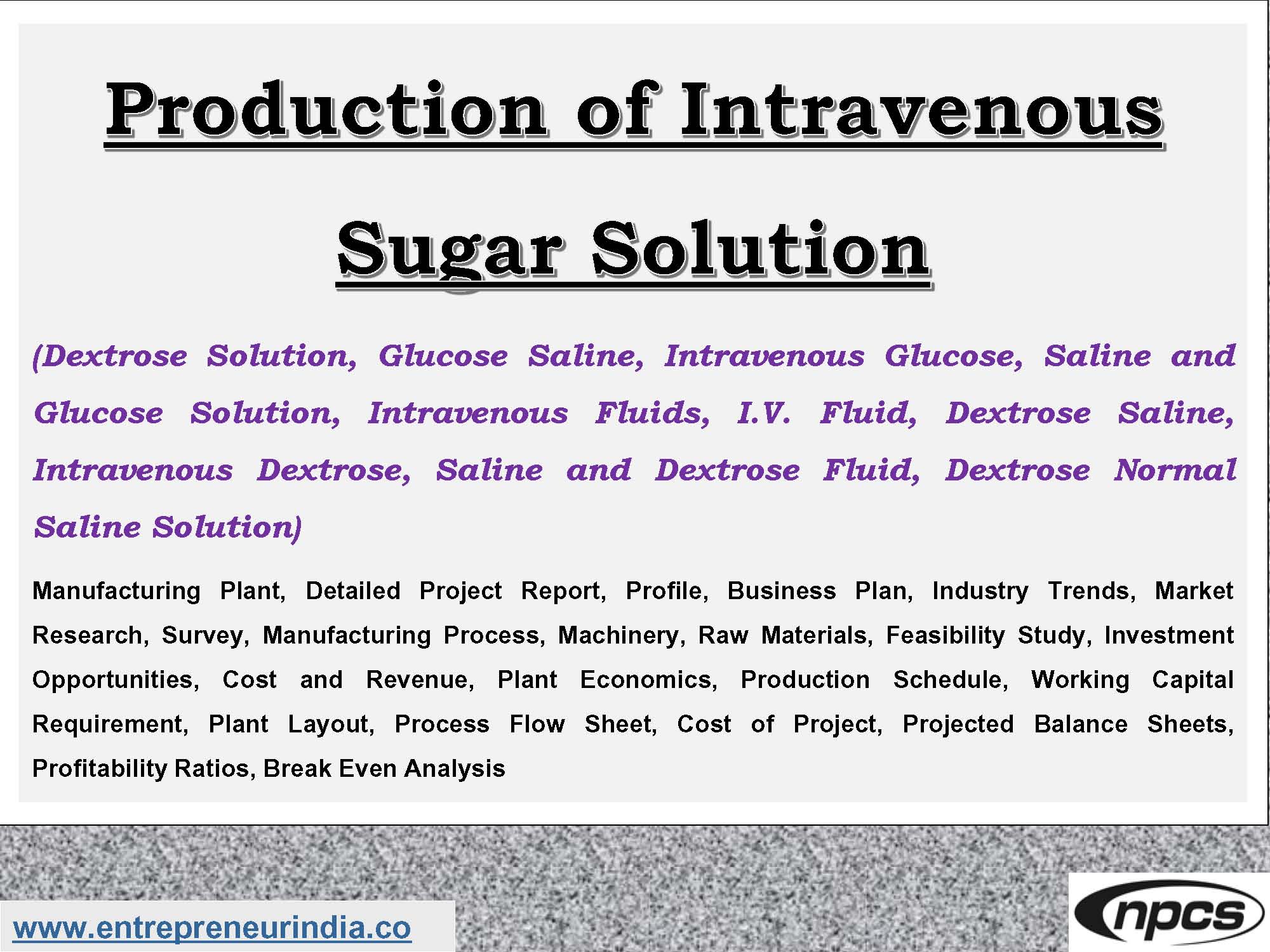
India’s expanding healthcare sector and increasing demand for life-saving medical products have made IV fluid manufacturing one of the best business to start in the pharmaceutical industry. From hospitals and clinics to government tenders and export markets, IV fluids are always in demand, ensuring a steady and recession-resistant business model.
If you are considering entering the medical manufacturing field, this guide will help you understand the IV fluid production process, required investment, equipment, licensing, and the profit potential of this high-demand business.
What Are IV Fluids and Why Are They in Demand?
IV fluids (Intravenous fluids) are sterile solutions administered directly into a patient’s bloodstream. They play a critical role in:
-
Hydration
-
Electrolyte balance
-
Medication delivery
-
Emergency care and surgery
The most commonly produced IV fluids include:
-
Dextrose 5% and 10%
-
Normal Saline (0.9% Sodium Chloride)
-
Ringer’s Lactate
-
Glucose-Saline Combinations
With hospitals, clinics, ambulatory care centers, and relief organizations relying on these fluids daily, the demand for reliable suppliers is strong. That’s why many experts consider this one of the best business to start in India’s pharma segment.
See More : Small-Scale Business
Step-by-Step IV Fluid Manufacturing Process
The process of manufacturing IV fluids involves strict quality control and sterile production standards. Here’s a simplified overview:
-
Water Purification:
The first step is purifying water using reverse osmosis (RO), ultraviolet (UV), and deionization systems. Water must be completely free from contaminants and pyrogens. -
Solution Preparation:
Pharmaceutical-grade raw materials like dextrose and sodium chloride are dissolved in the purified water under controlled conditions. -
Filtration:
The solution is passed through micro-filters (0.2 to 1 micron) to remove particulates and ensure clarity. -
Filling and Sealing:
The sterile solution is filled into IV bottles or flexible pouches inside a cleanroom using automatic machines. Containers are then sealed without human contact. -
Sterilization:
The filled containers undergo high-pressure steam sterilization (autoclaving) to kill any microbes. -
Quality Testing:
Each batch is tested for pH, sterility, and concentration. Samples must pass all tests before the fluids are released for sale.
Investment, Machinery & Raw Materials
Setting up a basic IV fluid manufacturing plant requires an investment of around ?2 crore to ?8 crore depending on the capacity and automation level. Key components include:
-
Water Treatment Plant (RO + UV + EDI)
-
Mixing & Holding Tanks (SS316)
-
Sterile Filtration Units
-
Aseptic Filling & Sealing Machines
-
Steam Sterilizer (Autoclave or Retort)
-
Labeling & Packaging Machines
-
Cleanroom Facility (Class 100 or 10,000)
Raw materials needed include:
-
Dextrose (anhydrous or monohydrate)
-
Sodium chloride and other medical-grade salts
-
Sterile water
-
PVC or non-PVC bottles/pouches
-
Caps, seals, and printed labels
Licensing and Quality Compliance
IV fluids are classified as essential life-saving drugs, so regulatory approvals are mandatory. To legally start your IV fluid manufacturing business, you will need:
-
Drug Manufacturing License under the Drugs & Cosmetics Act
-
GMP Certification (Good Manufacturing Practices)
-
Pollution Control Board Clearance
-
Factory License and Fire NOC
-
WHO-GMP Certification for exports
-
Udyam Registration (MSME) for availing schemes and loans
The plant must comply with strict sterility norms and is subject to inspection by state drug authorities.
Target Market and Sales Channels
Your potential customers include:
-
Government hospitals (via tenders)
-
Private hospitals, nursing homes, and clinics
-
Pharma distributors and medical wholesalers
-
NGOs and disaster management agencies
-
Export buyers in Africa, Southeast Asia, and the Middle East
Listing your business on platforms like GeM (Government e-Marketplace) and IndiaMART can help attract bulk buyers and secure long-term supply contracts.
Profit Margin and ROI
The profit margin in IV fluid manufacturing ranges from 15% to 30%, depending on production scale, quality certifications, and customer contracts. Larger volumes and government tenders offer higher stability and returns.
| Expense Head | Estimated Cost |
|---|---|
| Machinery & Equipment | ?1.5 – ?4 crore |
| Cleanroom Infrastructure | ?50 lakh – ?2 crore |
| Licensing & Compliance | ?5 – ?10 lakh |
| Monthly Working Capital | ?30 – ?60 lakh |
| Manpower & Overheads | ?1 – ?2 lakh/month |
Return on investment (ROI) is achievable within 18–24 months in most medium-scale setups, especially if export contracts are secured.
Government Support & Financing
You can avail various financial and policy benefits under:
-
MSME Subsidies (CLCSS capital subsidy scheme)
-
PMEGP Loans for new manufacturing units
-
Interest subvention schemes for pharma businesses
-
AYUSH & Pharma Cluster Support for plant setup in industrial zones
-
Export Promotion Councils for international market access
State governments also provide tax incentives, land assistance, and infrastructure benefits if you set up the plant in a designated pharmaceutical park.
See More : Circular Loom Woven Sack
Final Thoughts
IV fluid manufacturing is a high-demand, socially relevant business opportunity. With increasing investments in healthcare, government schemes, and export demand, the Indian market is ripe for growth in this sector.
By maintaining strict quality control, sterile production, and compliance with regulations, entrepreneurs can create a sustainable and profitable business. Whether you’re targeting hospitals, healthcare providers, or international buyers, this essential medical product ensures steady growth and long-term success.





